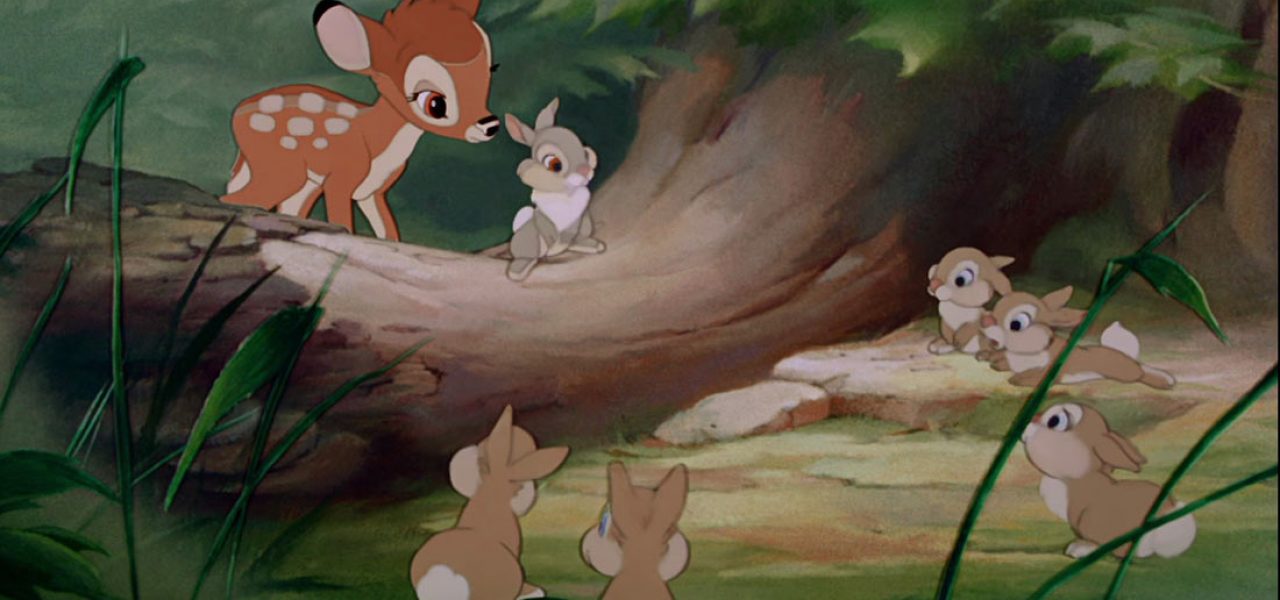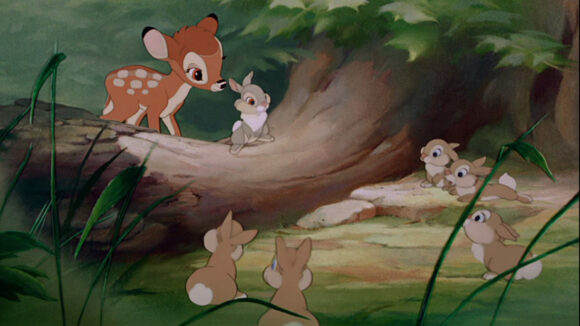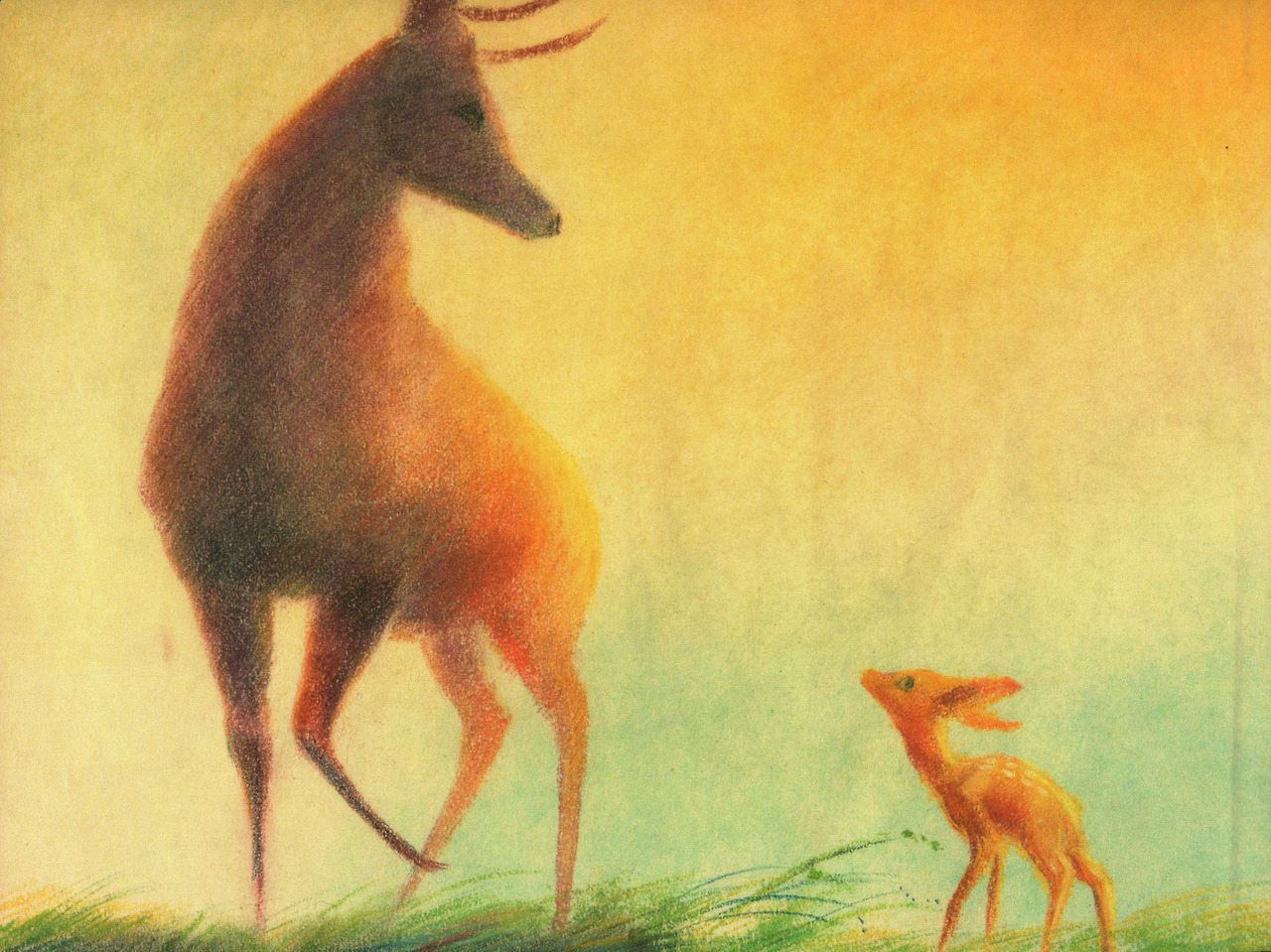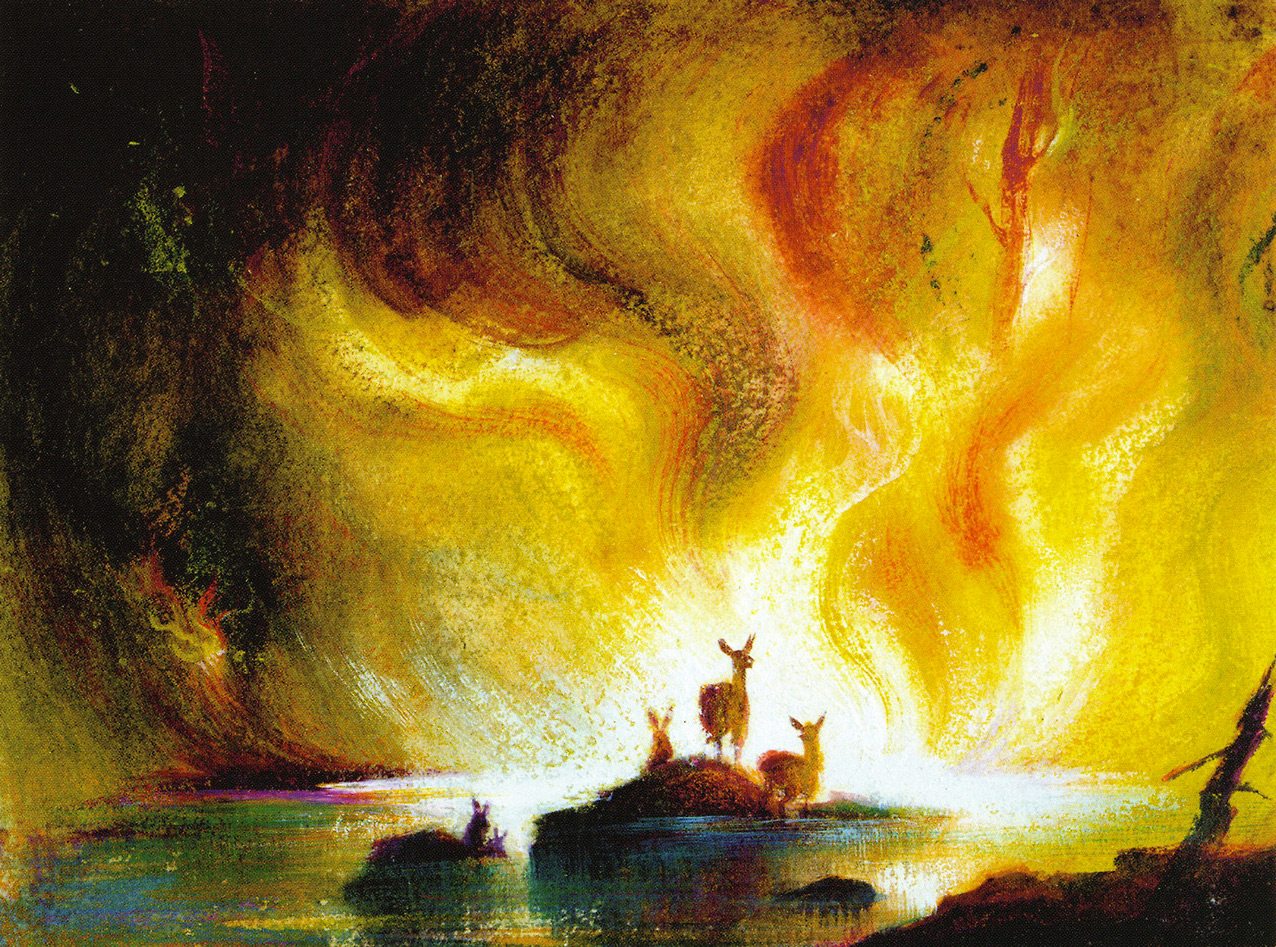

75 Years After Its New York Debut, ‘Bambi’ Remains Underrated
An impressive masterpiece of art and environmentalism, Bambi remains underrated, 75 years after its New York City debut, which happened on this day. That this is possible in an epoch of exponential global warming and mass extinction is tragicomic, as theater multiplexes swell with lesser works and Earth swelters, afire just like in Bambi’s climax.
The irony may be that Walt Disney had to take pains to water it down. Felix Salten’s source text — Bambi, A Life in the Woods, published 1923 in pre-Nazi Austria — is as lyrically epic as its author’s geopolitically turbulent life. Hitler banned Bambi because it was a popular book-of-the-month standout from a well-published Jew, whose abrupt immigration from Austria to Switzerland set loose a chain of events that landed the American film rights to Bambi in Walt Disney’s lap.
And there it lied, a green rallying cry, anticipating the cli-fi apocalypse to come. That is, until another immigrant with a complex backstory — Chinese-American artist and Bambi production designer, Tyrus Wong — transformed his own geopolitically turbulent experience into one of the most artful expressions of nature ever channeled into animation.
Temporarily incarcerated as a child in California’s notorious Angel Island, and plagued by racism throughout his career, Wong and his poetic, meditative Chinese-influenced paintings, spare yet still expressive in scope, set the style and tone for Disney’s Bambi.

As much as Wong’s childhood trauma was about the demythologization of America as a mythical “Gold Mountain” with streets lined with money, his Bambi was about the denaturalization of nature, whose complex details, which had stalled Disney’s production for so long, were stripped and rendered with surprisingly more feeling. Although Disney added comedic characters and elements that could cross over to popular American cinema — some of which can be dissected in a slate of newly included extras on Disney’s recently released Bambi: The Signature Collection — it was emotional response that Salten and Wong and Disney wanted most when it came to communicating what it is like to live and die in the woods.
Because then — like now, but in exponentially accelerated fashion — there is (so) much dying to discuss. Salten’s novel has much slaughter, of animals and men, gun-crazy terrorists known only as He. Translating such death and destruction from book to screen sent Disney himself down some weird streets.
“Suppose we have Bambi step on an ant hill and we cut inside and see all the damage he’s done to the ant civilization?” storyman Mel Shaw recalled Disney asking during a brainstorming session.
“Daddy, why did you have to kill Bambi’s mother?” Disney’s daughter Diane cried as a child. “There were plenty of things in the book that you changed. Why couldn’t you change that?”
Walt Disney also suggested setting fire to the stupid humans who set fire to the gorgeously drawn forest in Bambi’s destabilizing finale, an impressive apocalypse painted directly to cel, which stuns to this day. But then, as today, the cries of burning Earth and its biodiversity, which bring both Salten’s beloved novel and Disney’s decorated film to brilliant life, are just more noise in a global cacophony.

Bambi bombed at the box office, 75 years ago, lost in the fog of World War II. In America — a nation, like Germany, whose war machines were empowered by oil, climate change’s catastrophic fuel — the environmental message of Bambi, hated by hunters and ignored by masses arraying for combat, was collateral damage at home and abroad.
Wong was out of a job at Disney by 1941, and Salten was dead six months after Hitler shot himself in 1945. Bambi’s cultural impact would stay suppressed until 1947, when it started recouping losses in post-war reissues — a practice, judging from vault exhumations of The Signature Collection, that continues to this day.
And yet Bambi’s overall legacy remains stunted by the same toxic emissions found in the film — from genocidal humans who should know better as they burn everything down around them. It’s a sentimental education of the highest order, struggling for breath as movies about emojis and minions and other distractions drown it out, in a cartoon marketplace experiencing an economic boom, if not much else. A cli-fi pioneer anchored by the apocalyptic collision of man and nature, Bambi would today perform a public service if it was freely accessible, as a harrowing yet hopeful warning of what happens when we push the environment past its heart-breaking point.
